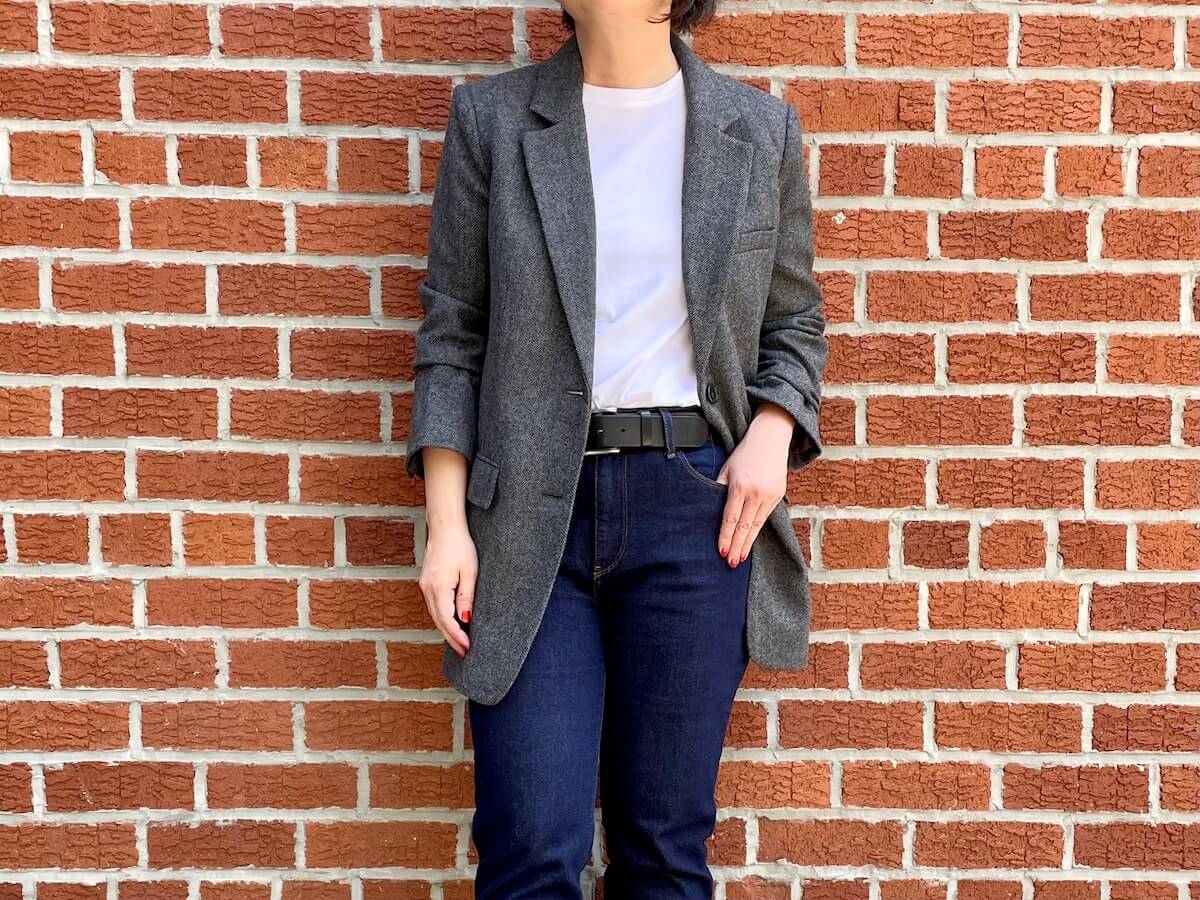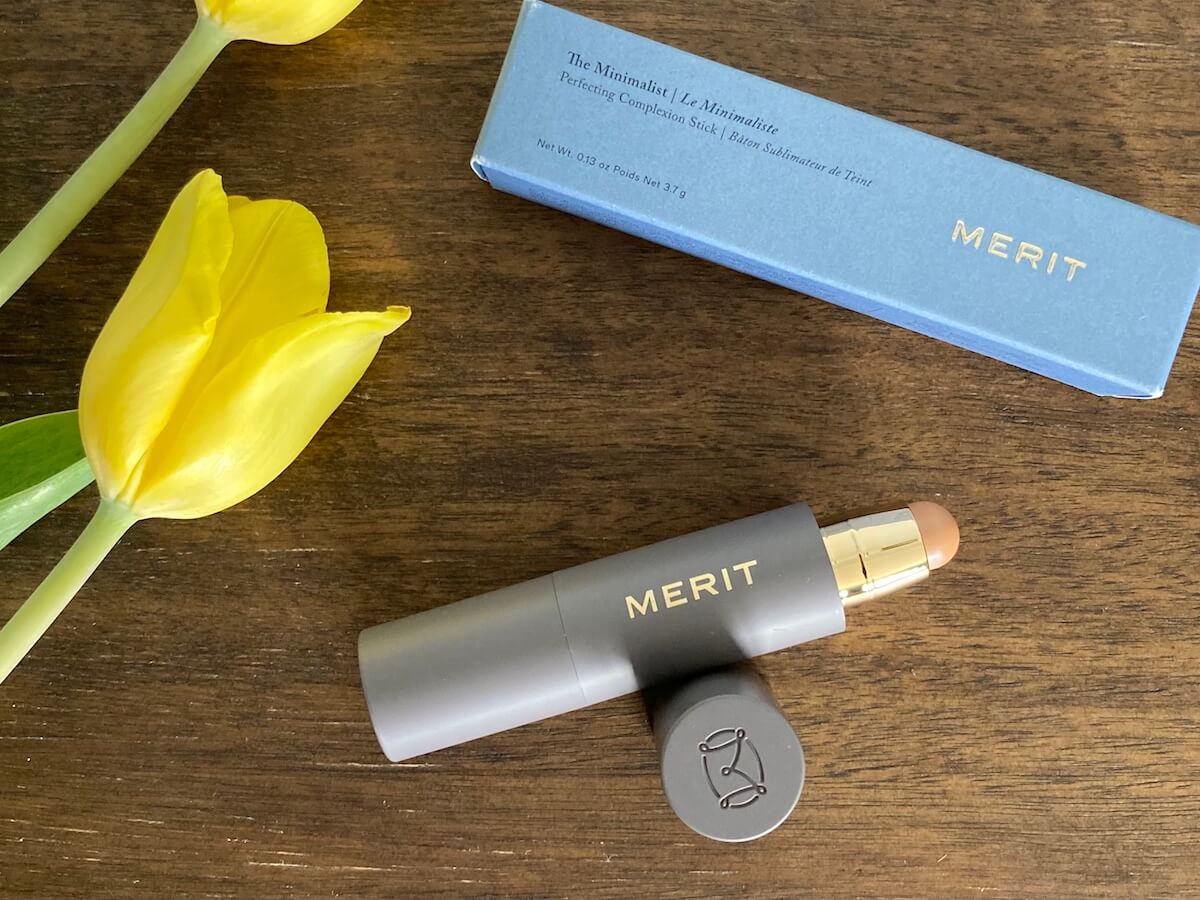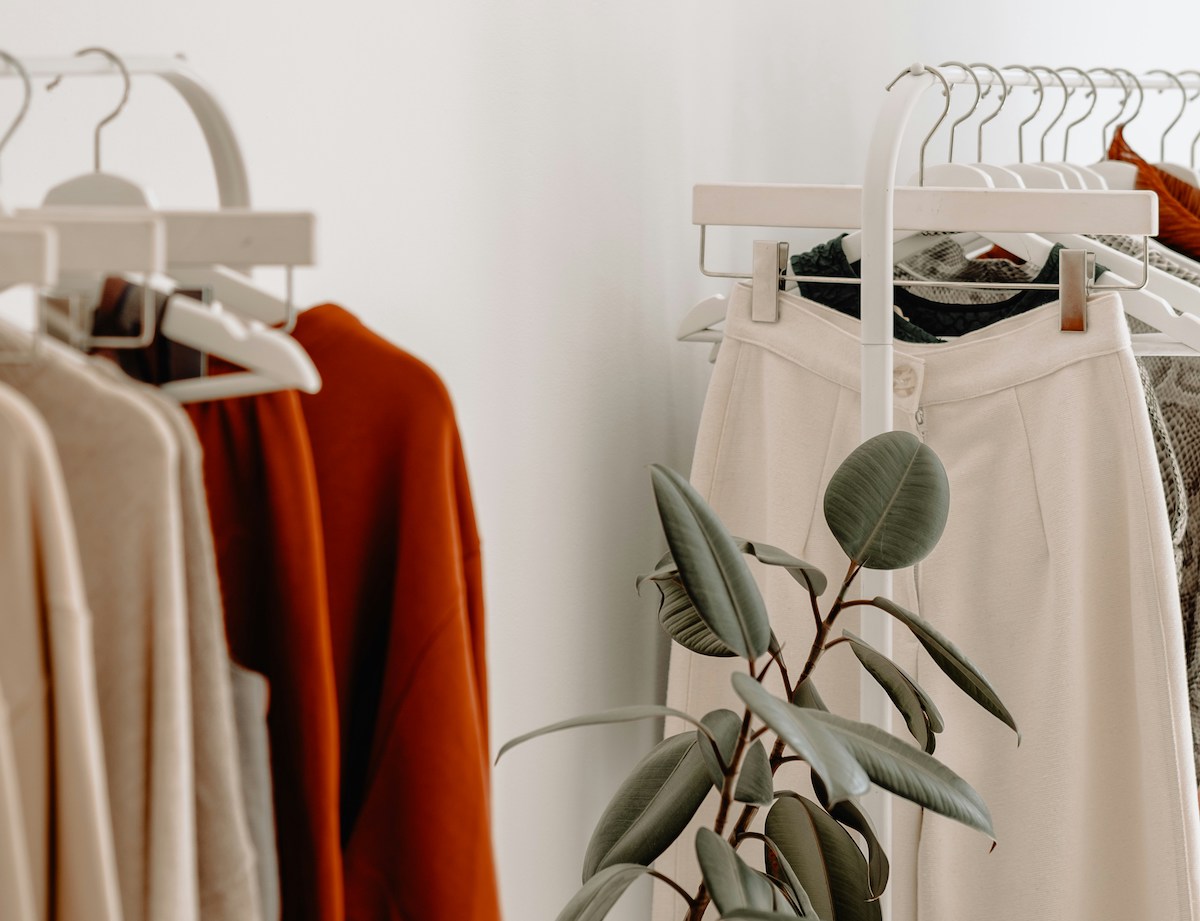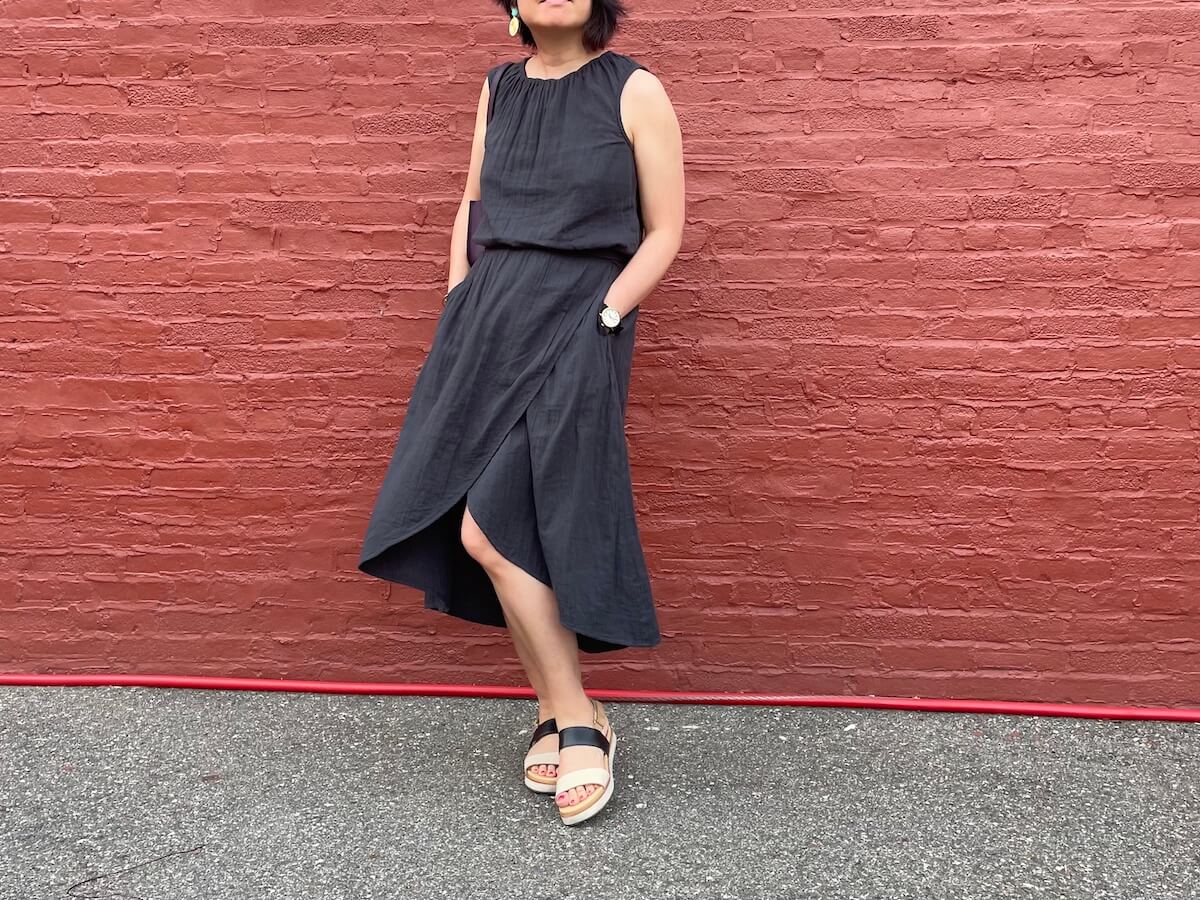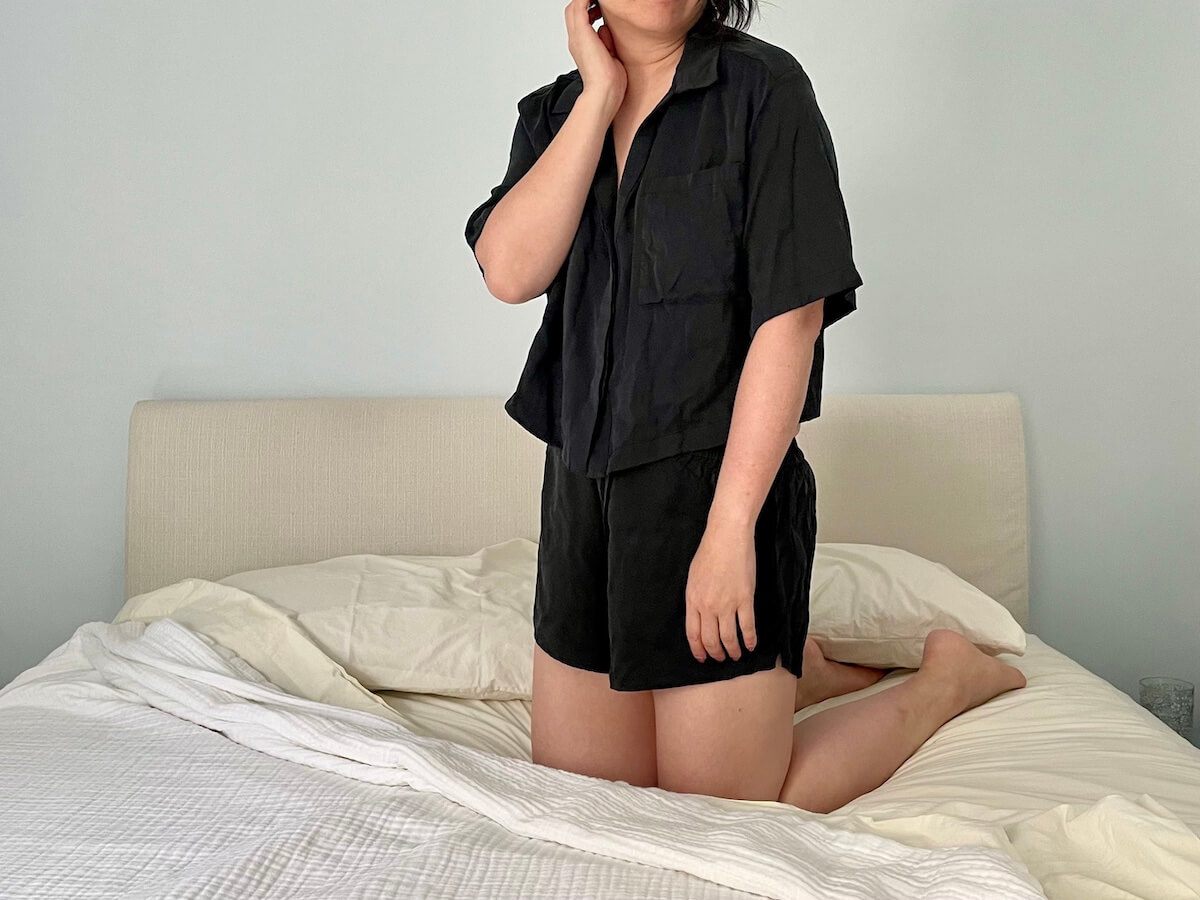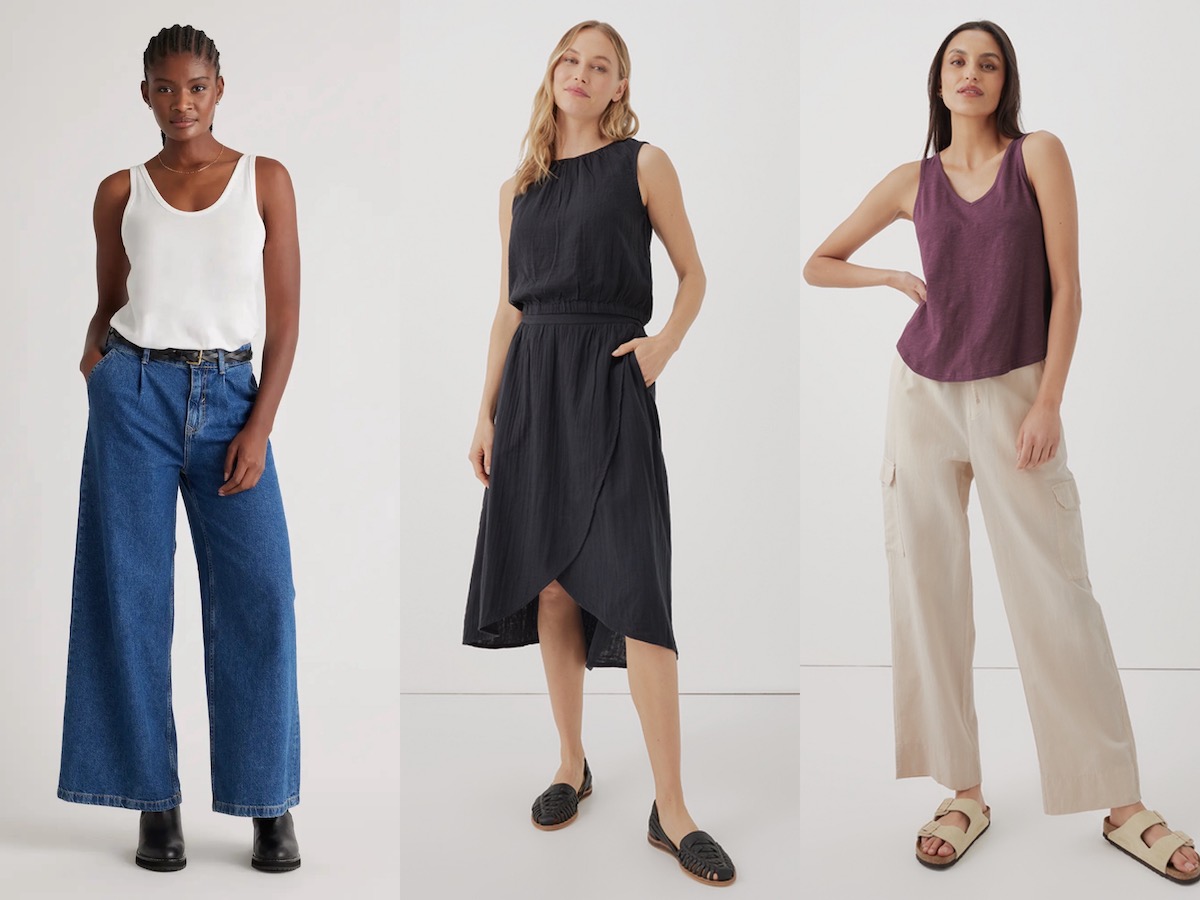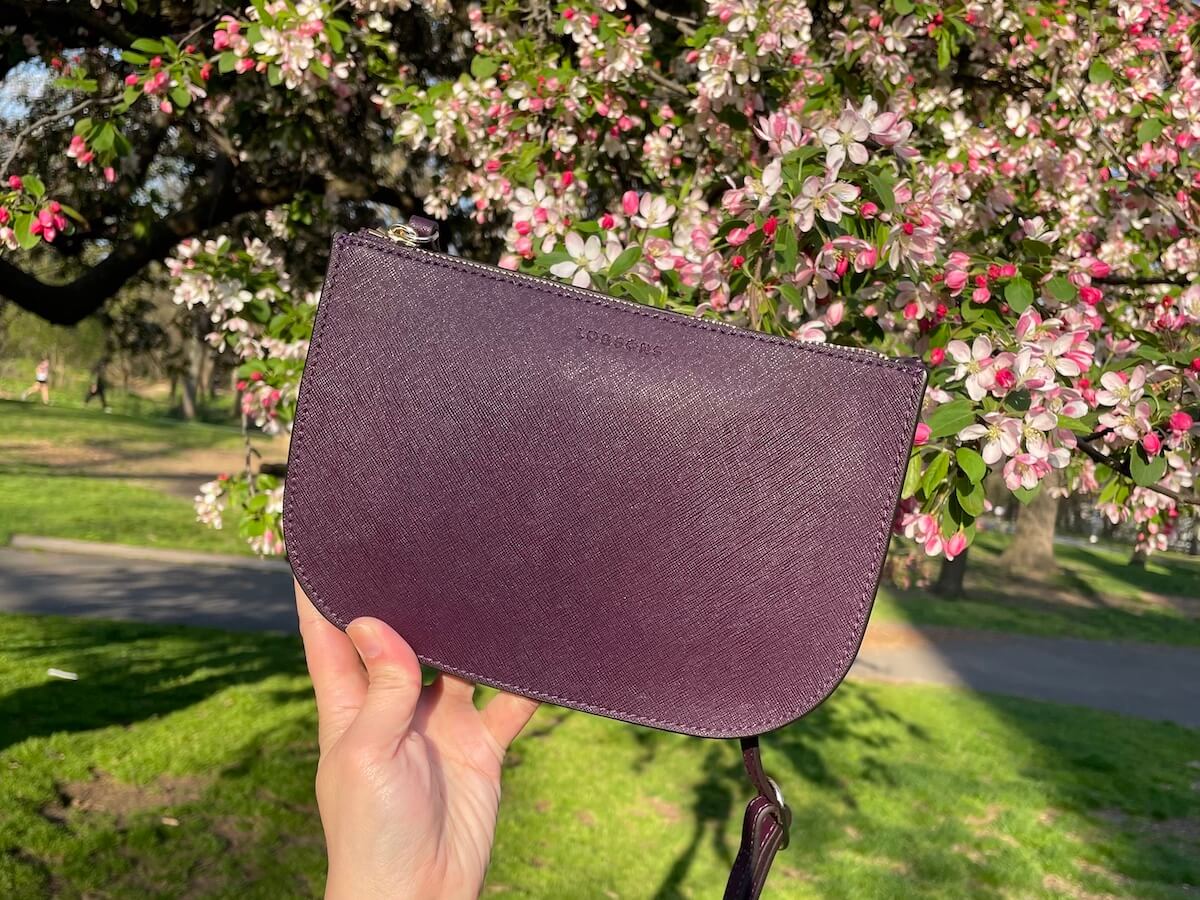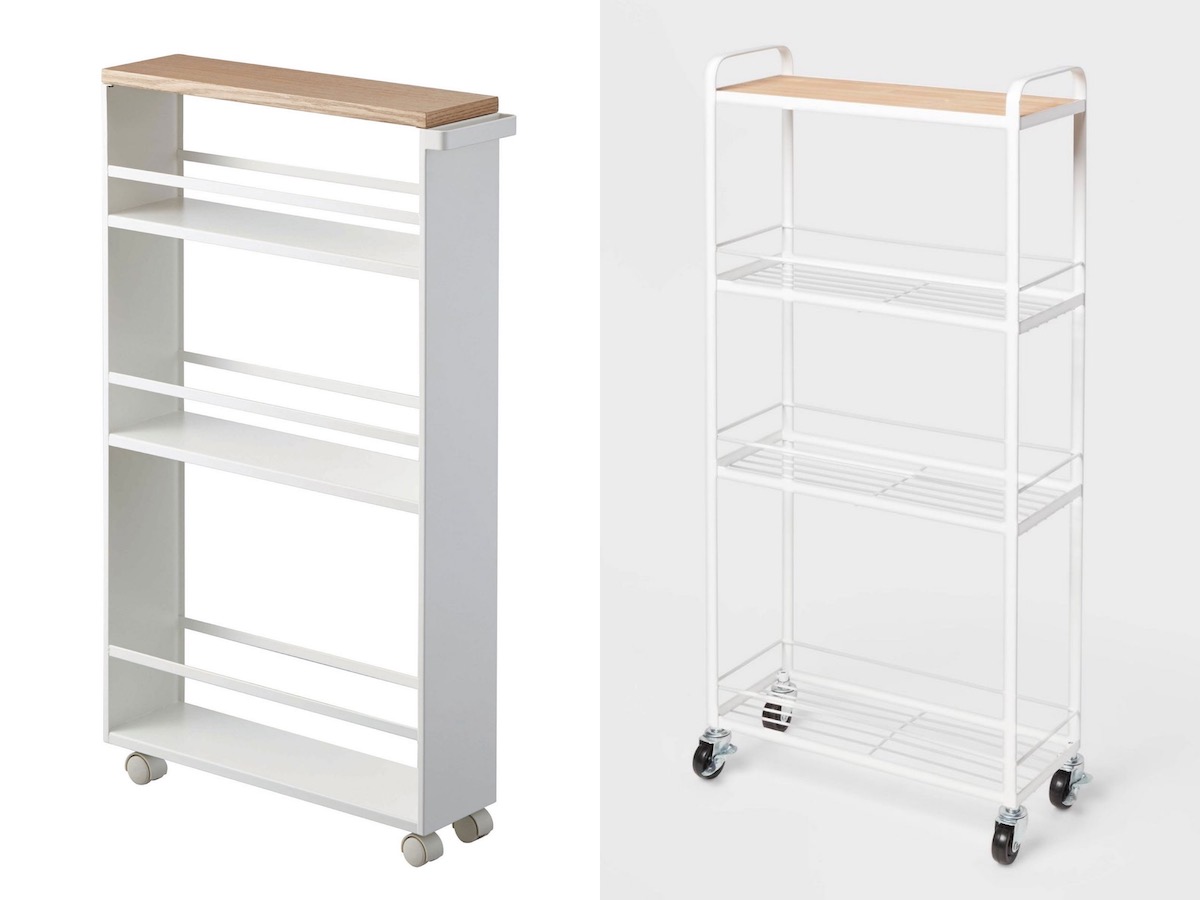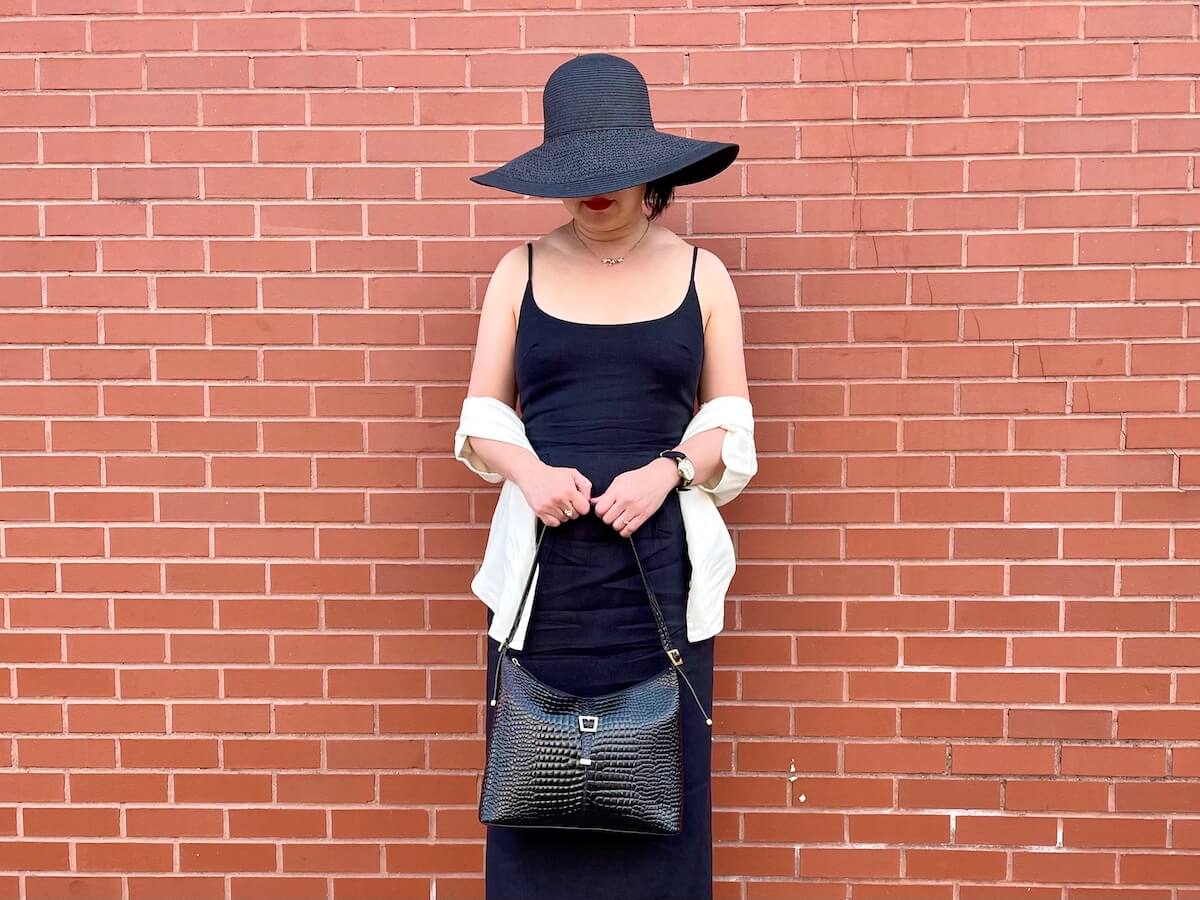I love the borrowed-from-the-boys look of an oversized blazer. But as someone petite, I wasn’t sure that I could pull it off. Would an oversized blazer look ridiculous on me? To find out, I played around with an oversized wool blazer from Quince.
Here’s how it looks on 5′ 4″ me. I’m wearing a small, which is my usual size.

Hmm, it definitely looks too big on me. Not surprisingly, the sleeves are too long. I thought this was a fail at first. But what if I just made an adjustment?
Quince gifted this blazer to me and this post contains affiliate links. If you shop through my links, I may earn a commission. As always, I decide what to write about and all opinions are my own.
6 Tips for Styling an Oversized Blazer for Petites
Tip 1: Shorten the sleeves. As I learned from looking into whether clothing at Uniqlo Japan is different than Uniqlo U.S., the sleeve length can make all the difference. So what would this look like if I just cuffed the sleeves?
I tried this sleeve-shortening trick: folding the sleeve over a hair tie. This instantly turned a too-long sleeve into a three-quarter length sleeve. (The hair tie, BTW, works in a pinch but is pretty tight for an arm, so you can use another elastic.)

The sleeve-shortening hair tie trick.
And what do you know? The sleeves do make all the difference! Dare I say it looks good now and achieves that cool effortless look I was going for. So, whether you make a temporary adjustment or take it to a tailor for proper hemming, shorten those sleeves to a length that works for you.

Quince Blazer courtesy of // Mott & Bow T-shirt c/o // Mott & Bow Jeans c/o [review] // Nisolo Boots [review] // Narragansett Leathers Belt
Tip 2: Wear a fitted base layer. You’ll notice I’m wearing a T-shirt tucked into slim jeans. It helps to keep your base layer fitted since the blazer itself is already loose. If you’re tall, I bet you can get away with a roomier leg. But for us shorties, a slimmer base layer keeps things more proportional.
Tip 3: Wear high-waisted bottoms. The jeans I’m wearing have a high rise, and I think that’s also important for proportions, as it creates the illusion of longer legs.

Quince Blazer courtesy of // Mott & Bow T-shirt c/o // Mott & Bow Jeans c/o [review] // Nisolo Boots [review] // Narragansett Leathers Belt
Tip 4: Wear the blazer open. While it doesn’t look terrible to wear it buttoned up like above, this creates a big block that can make you look wider. I feel that wearing the blazer open is more flattering and slimming.
Tip 5: Choose a solid color or subtle print. Big bold prints can be fun, but they can also overwhelm. A safer bet is to choose something solid or in a small print. The fact that this herringbone print is subtle and gives an overall effect of solid gray makes for a more flattering silhouette.

A subtle pattern keeps things easy on the eye.
Tip 6: Keep accessories simple and small. Since the blazer is making a statement by virtue of its proportions, I wouldn’t go big or loud on anything else. When it comes to carrying a bag, I’d skip the big bag and carry something on the medium to smaller side. And I’d keep jewelry and other accessories on the simple side. I’m wearing a plain black belt here, which matches my black boots.
Speaking of footwear, one common recommendation for petites is to wear heels. Yes, heels can be lengthening and make you appear taller. But if you’re not feeling heels, like I am not here, you can go with something lower, so long as the shoe is not too chunky. I think these low-heel boots work just fine.

Quince Blazer courtesy of // Mott & Bow T-shirt c/o // Mott & Bow Jeans c/o [review] // Nisolo Boots [review] // Narragansett Leathers Belt
More Oversized Blazers
For more info on this Quince blazer, see my full review. Plus, here’s a few other options for menswear-inspired oversized blazers:
Everlane Italian Wool Oversized Blazer – If I had to guess, I’d say that Quince copied from Everlane, as this blazer looks identical down to the flap pockets, four buttons on each cuff, and the lack of back vent. Everlane offers more versions with patterns like houndstooth and stripes.
Sezane Chelsea Jacket – Sezane calls this a jacket, but to me it looks like a long oversized blazer. I especially like the camel ecru herringbone. And it’s 100% wool.
Gap Relaxed Plaid Blazer – One pro about a big brand like the Gap is that some of its offerings, like this blazer, comes in petite sizing. A con: it’s synthetic (polyester & rayon).
Uniqlo C Oversized Tweed Jacket – From Clare Waight Keller’s collection for Uniqlo, featuring big patch pockets. Mostly synthetic (only 10% wool), but it’s not itchy.
Petite Studio Vito Wool Blazer – Finally, an option made just for petites! This isn’t truly oversized, but it does have a relaxed fit. It’s 100% wool and also comes in brown.
